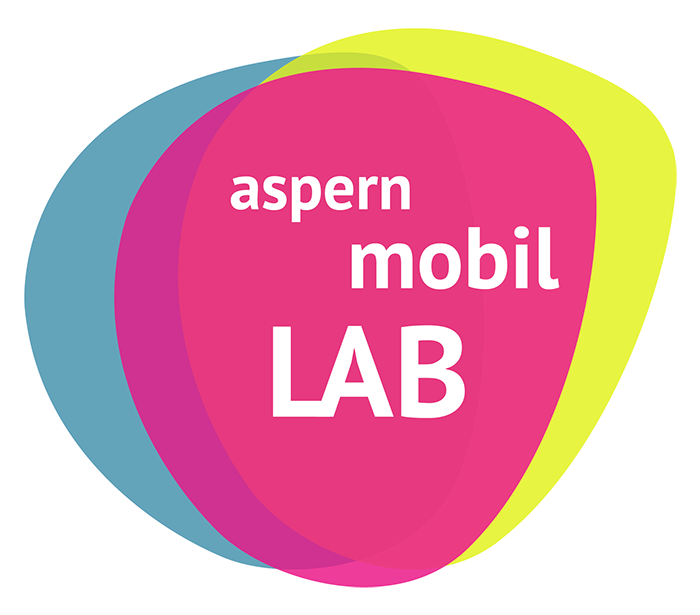Methodology
All our methods use design thinking as a basic approach. Design thinking is a collection of diverse design generating methods and approaches with a participatory core.
About 20 years ago, the idea was introduced as a cognitive process by designers (Cross et al 1992, Eastman et al 2001). The aim was to understand creativity in the design process and to improve the design skills of the participants. Today, design thinking means “a complex thinking process of conceiving new realities, expressing the introduction of design culture and its methods into fields such as business innovation” (Tschimmel 2012: 2). The best known methods in this field are:
- the 3I model (inspiration, ideation, implementation) of IDEO (2001) (Brown and Wyatt, 2010: 33ff);
- the HCD Model (Hearing, Creating and Delivering) by IDEO;
- the model Understand, Observe, Point of View, Ideate, Prototype and Test by Hasso-Plattner Institute (Thoring and Müller, 2011);
- the 4D or Double Diamond Design Process Model (Discover, Define, Develop, Deliver) by British Design Council (2005);
- the Service Design Thinking Model (Exploration, Creation, Reflection, Implementation) by Stickdorn and Schneider (2010).
The research sector Artifact-based Computing & User Research at the Vienna University of Technology has been developing a set of methods in the area of design thinking for over 15 years. It consists of several parts using suitable methods and approaches. After several phases and iterations, the design team transforms the original idea into a design model that can be subsequently implemented by the engineering team. Diverse methods are used – according to the type of project and the composition of the design teams.
Basic research
In basic research, the main aim is to analyze the different mobility behavior of people living and working in aspern Seestadt. In other words, the different mobility behaviors must be classified into meaningful categories of “behaviorally homogeneous groups” (see Mobility Survey aspern Seestadt). In addition, the combinations of factors responsible for the different mobility behaviors (drivers) have to be determined. By using panel analyses, a shift in the mobility patterns of individuals or households can be described and analyzed over a period of time.
A second step can be to analyze the stakeholders’ actions of the governance in the transport and mobility sector regarding their decisions in the political-planning field as well as the supply of mobility services (for example in the organization of the mobility fund, the supply of Seestadt-Card and so forth) along with analyzing their institutional scope, their use and the extent and efficiency of vertical and horizontal cooperation.
Applied research
The field of applied research is particularly broad, as it includes domestic, cooperative and “foreign” administered research projects, which may include the practical implementation of knowledge from basic research as well as the scientific support and evaluation of testbed applications in aspern Seestadt.
Research coordination and management
Because of its size and complexity but above all because of its existing transport and mobility concept, aspern Seestadt draws the interest of diverse scientific communities as well as the media, not to mention the first International Building Exhibition (IBA) in Austria. In order to prevent “over-research” but also to be able to achieve synergies with the different research in, with and about aspern Seestadt, it is essential for aspern.mobil LAB to perform coordinating and advisory activities.
Activation and participation procedure
Prior to all activating and participatory processes, the priority is to represent a competent and open cooperation partner in the existing institutional network of existing advisory, support and coordination institutions with the aim of developing and supporting win-win situations within the framework of the network.
The main measures for activation and participation are primarily aimed at the people living and working in aspern Seestadt. Integrating people with all their different interests, goals, interpretations and behaviors into the development of a district, that as of yet has only been completed by a third, is one of the main tasks of the citizen-science approach of the aspern.mobil LAB. In order to reduce the high degree of social selectivity of participatory processes, different forms of offline and online procedures are demanded.
In another arena, the emphasis lies on of involving political stakeholders (district and state), planning administrators and local private companies in activation procedures to further stimulate sustainable development of space, transport, mobility and transport. Here again, it is necessary to design innovative processes. In this context, there may also be given the opportunity to consider new governance structures necessary for realizing negotiation and participation processes with stakeholders in order to close gaps in the political target corridor (e.g. equal mobility) ( bm:vit 2014: 10).
aspern Seestadt as a testbed in the context of smart city approaches
Due to its size, its publicity and its innovative approach to district and mobility management, aspern Seestadt has the potential to develop, implement and test different products, procedures, processes and evaluations in the transport and mobility sector on a one-to-one basis. The aim is to develop and advertise this potential in order to become the development quarter of Vienna’s ambitious smart city strategy.
Active role in the proposal and implementation of smart city approaches
aspern Seestadt is one of Europe’s largest city development areas. It has been completed by nearly a third (based on the number of the planned apartments). The development predominantly takes place within the internationally acknowledged developers’ competition. The tasks of a small-scale mobility concept have been added to Seestadt in addition to functions across construction fields, which has not been in the competence of property developers. The aspern.mobil LAB strives to provide technical advice within the competitions in order to offer innovative solutions in the context of urban planning and architectural solutions, to propose multi-agency community facilities and solutions for different types of active mobility and to ensure the integration of the “small” solutions in the superordinate transport and mobility concept of the entire district.
Evaluation and dissemination of scientific, methodological, political and business consulting findings in the political-planning practice
An essential purpose of promoting urban mobility laboratories is to communicate the results of the activities in the lab locally as well as the governmental and entrepreneurial stakeholders. Additionally, it is intended to introduce the findings to the scientific community, to integrate them into teaching and to examine the transferability of the insights gained. In this way, the (research) knowledge and practical experience can be harnessed for other neighborhoods or cities.
Literature:
bmvit (Bundesministerium für Verkehr, Innovation und Technologie) 2014: FTI-politische Roadmap zur Ausrichtung der FTI-Maßnahmen „Mobilität der Zukunft“ im Themenfeld „Personenmobilität innovativ gestalten”. Wien. bmvit.
Brown, T. and Wyatt, J. (2010): Design Thinking for Social Innovation. Stanford Social Innovation Review, 31-35.
Cross, N. et al. (Hg.) (1992): Research in Design Thinking. Delft: Delft University Press.
Eastman, C. et al. (Hg.) (2001): Design Knowing and Learning: Cognition in Design Education. Elsevier Science Ltd., Oxford.
Stickdorn, M.; Schneider, J. (Hg.) (2010): This is Service Design Thinking. Basic – Tools – Cases. BIS Publisher, Amsterdam.
Thoring, K.; Müller, R. M. (2011): Understanding the Creative Mechanisms of Design Thinking: An Evolutionary Approach. Proceedings of the DESIRE’11 Conference Creativity and Innovation in Design. ACM, Eindhoven, pp.137-144.
Tschimmel, K. (2012): Design Thinking as an effective Toolkit for Innovation. In: Proceeding of the XXIII ISPIM Conference: action for Innovation: Innovating from Experience. Barcelona.







